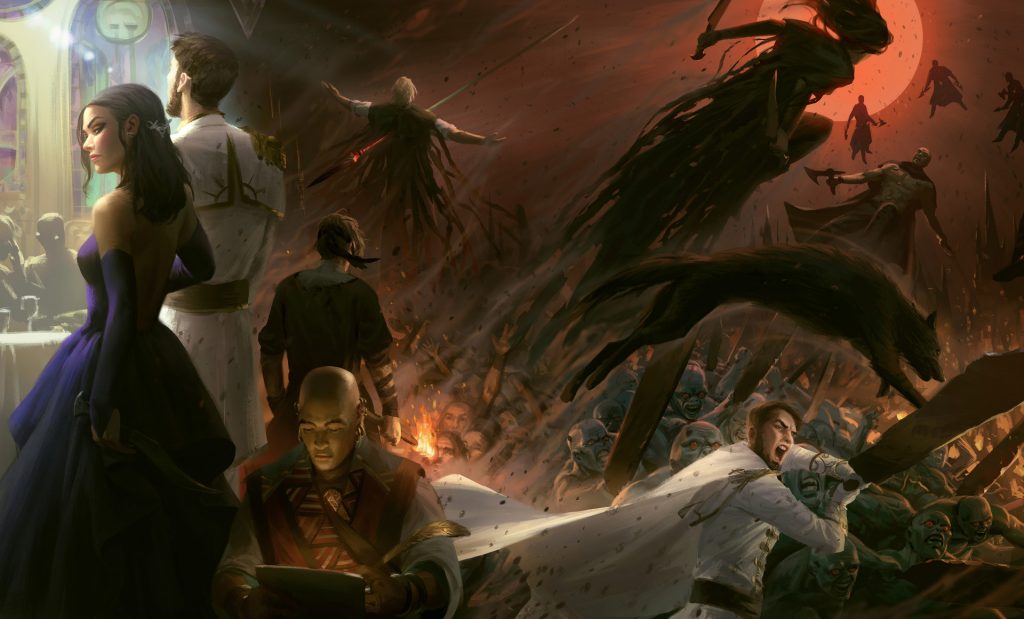Brandon Sanderson’s World-building Tips

Are you a novice fiction writer who is looking for some pointers to boost your world-building confidence? We’ve got you covered!
We have compiled some tips on world-building by Brandon Sanderson, a renowned American author of epic fantasy and science fiction. He is famous for the Cosmere fictional universe where he created fantasy novels such as The Stormlight Archive and the Mistborn series. He has also spoken extensively about Sanderson’s Laws of Magic and invented the phrases “hard and soft magic systems.”
Here’s what Brandon Sanderson has to say concerning world-building, especially in the fantasy and sci-fi genres where his expertise lies:
- Do What Works For You
Some fiction writers like to go over-the-top with their world-building while others prefer to stay within the lines by adding a little spice to their story. It’s up to you to decide how much is too much.
You can either set your story in our world or create what’s called “second world” imagination, which is an entirely fictional universe. Good examples of “second world” fantasy are, A Song of Ice and Fire by George R.R. Martin and Riftwar cycle by Raymond E. Feist.
“Second world” fantasy gives you the freedom to do whatever you want with your story, unrestricted by historical rules.
“Real world” fantasy on the other hand is categorized into historical fantasy and alternate history fantasy and it needs a decent amount of research. Your story will certianly blow if you set Atilla the Hun to capture Florence Nightingale without using a time machine.
- Don’t Waste Too Much Time World-Building
Many fantasy authors become so engrossed in world-building that they find excuses not to write.
Remember that world-building is just one element of your story writing. After that, comes the actual task of writing. So don’t let world-building take over all of your time and energy.
There are two major groups of writers, namely the pantsers and outliners. Pantsers are those who believe that writing is an epic discovery process, so they write by the seat of their pants. If you’re a pantser, you’ll have to spend more time on planning how to establish your world than you’re used to.
Outliners, on the other hand, are those who like to plan everything before they begin to write and are the ones most susceptible to spend too much time world-building. If you are an outliner, draw a line on the sand to stop outlining at some point and begin writing as soon as you’re done planning, even if you don’t feel entirely ready.
- Don’t Spread Yourself Too Thin
Not every fantasy book is the same, even those written by the same author. They also can’t emphasize every facet of the world’s aspects. Some books delve into religion but emphasize less language diversity.
Other novels will feature captivating geography but focus less on political matters. Moreover, some novels detail historical events, for example, the book, The Wheel of Time while in other books, history is less crucial. You don’t have to detail every aspect of your world! Just detail the ones that would be exciting to the reader.
- Focus More on Areas that Influence the Stories
In his masterpiece Elantris, Sanderson focused more on languages because they were essential, so he made sure they were well crafted. However, in Mistborn, languages didn’t make much of an impact to the overall story and so he spent significantly less time on them.
- Create a Conflicting Setting and Place Your Characters in the Center of It
For instance, if you develop an amazing religion, let it be important to at least one of your characters. Make sure you connect everything you can to an element in your book, as world-building should influence the characters, magic and plot.
Furthermore, tying conflict with world-building offers you a much stronger conflict. World-based conflict is an awesome way of portraying multiple stories in a similar setting. You get to build yourself a well where you can tap conflict whenever you desire it. This means you don’t have to force conflict when it should arise as your world naturally creates it!
How Much World-building Does Sanderson Do?
It varies with the extent of the book. A large multi-dimensional epic fantasy like The Way of Kings takes years to world-build. Mistborn took roughly a year of world-building before writing.
Though Sanderson is a pantser in some books, he almost always spends some time developing his world before writing. World-building usually comes first before anything else in his book. He however cautions against spending too much time world-building and none spent on writing.
Which Aspect of World-building Should You Spend More Time With??
It also varies with the novel; however, since Sanderson is a master of fantasy and science fiction, he spends a significant amount of time developing his magic system. It’s magic that keeps his stories alive!
Additionally, he focuses his energy on world-building areas that are vital to the conflict and the characters. “In Mistborn, the languages weren’t crucial so everyone spoke a common language. In Stormlight on the other hand, the language was very vital for my story and I developed the linguistics,” quotes Sanderson. “For a given book series, I may allocate more time to a certain world-building context.”
The other major aspect that consumes a lot of time during world-building is portraying the characters in the right manner. Though it requires a lot of time, Sanderson advises doing characterization during the actual writing process and spending the planning time working on plotting and world-building.
However, the time allocation depends on the author because there is no single method to world-building. Remember some writers succeed in jotting down every character to their last detail while some are used to winging it.
Sanderson states, “During world-building and plotting is when I sit down to write a chapter that I get into the details of who my character is. It’s therefore difficult to determine the amount of time I spend on each character and this also depends on the book I am working on.”
“When it comes to outlining, I jump from one area to another,” claims the famous fiction author. “I could be developing my character backgrounds and then something hits me about the culture, so I jump over there and work on it for some time. I could also jump over to plot, then back to the world.”
Using Stormlight as his example, Sanderson said he spent months and months developing the world for his book. He began with the most critical task of setting elements before exploring them in an encyclopedia-like manner, then continued from there.
Remember, LivingWriter can help you with this using the story elements feature.

There you have it! World-building tips offered by the best-of-the-best in the fiction genre. You are now fully equipped to create attention-grabbing fiction.
Try livingwriter.com for an epic world-building experience. It’s completely free!
Further reading: World-building with LivingWriter